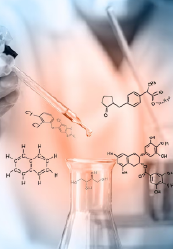Water-Soluble Packaging Market: A Sustainable Alternative to Conventional Plastic Packaging
Water soluble packaging are proportionately contemporary type of packaging substance that has acquired approval lately. In the water-soluble packaging market, these packaging are configured from a material that can dissolve in water, which renders them biodegradable and eco-friendly. They are normally utilized in several industries, such as household cleaning commodities, agriculture, and healthcare. These packaging are a substance that is water soluble. These packaging are made from substances such as PVA, PLA, or starch-dependent materials that are biodegradable and can effortlessly splinter in water.
Benefits of Water-Soluble Packaging
- One of the most notable benefits of water-soluble packaging is that it minimizes plastic misuse. Conventional plastic packaging takes innumerable years to deteriorate and can be detrimental to the environment. Alternately, water-soluble packaging dissolves speedily and forsakes no detrimental remnants. This renders them an outstanding option for those who are seeking more viable packaging alternatives.
- Water soluble packaging has many pragmatic entreaties in several industries. They can be utilized in the healthcare industry to package medical reserve and biohazardous scrap. This assists to minimize the probability of impurities and subjection to precarious substances for both patients and healthcare laborers. These bags are also perfect for packaging hospital linens as they can be effortlessly dissolved in water, minimizing the requirement for laundry services and certainly preserving prices.
The Market Insight
The global water-soluble packaging market size and share was valued at USD 3,157.77 million in 2022 and is expected to grow at a USD 5,330.31 million with a CAGR of 5.4% during the forecast period 2032.
Growth Drivers
Strict government control on plastic prohibitions has had an affirmative influence on the development of the market. The draft of the EU control by the UK government, which targets to obtain zero plastic refuse by 2042, is a notable instance of such rules. The European Union and its representative nations have been at the vanguard of executing stringent directives and aims to minimize plastic refuse and encourage sustainable packaging solutions. In the water-soluble packaging market, the estimated earmark of nil unnecessary plastic refuse by 2042 illustrates a robust devotion to inscribing the environmental problems linked with plastic contamination. Such directives and earmarking generate a perception of importance and liability amidst businesses, motivating them to look for options for conventional plastic packaging. Water soluble packaging surfaces as a feasible solution that corresponds with sustainability intents prescribed by governments.
Delving into the Dynamics of the Water-Soluble Packaging Market Size and Share to Uncover Key Insights, Request for a Free Sample Report
Geographical Reach
North America: This region has witnessed exponential growth due to the growing demand for water-soluble packaging solutions because of end-user industries involving domestic commodities, food and beverages, and pharmaceuticals.
APAC: This region observed an escalated growth rate due to a rise in laundry detergents and personal care commodities in these nations, pushing the acquisition of water-soluble packaging solutions.
End Note
Water-soluble packaging is a superlative option for conventional plastic bags. They are eco-friendly, minimize the probability of pollution, and can be tailored to complement particular requirements. In the water-soluble packaging market, as the exploration continues for more sustainable packaging alternatives, water-soluble packaging is predisposed to enact a growingly crucial role in minimizing plastic refuse and safeguarding the environment.


